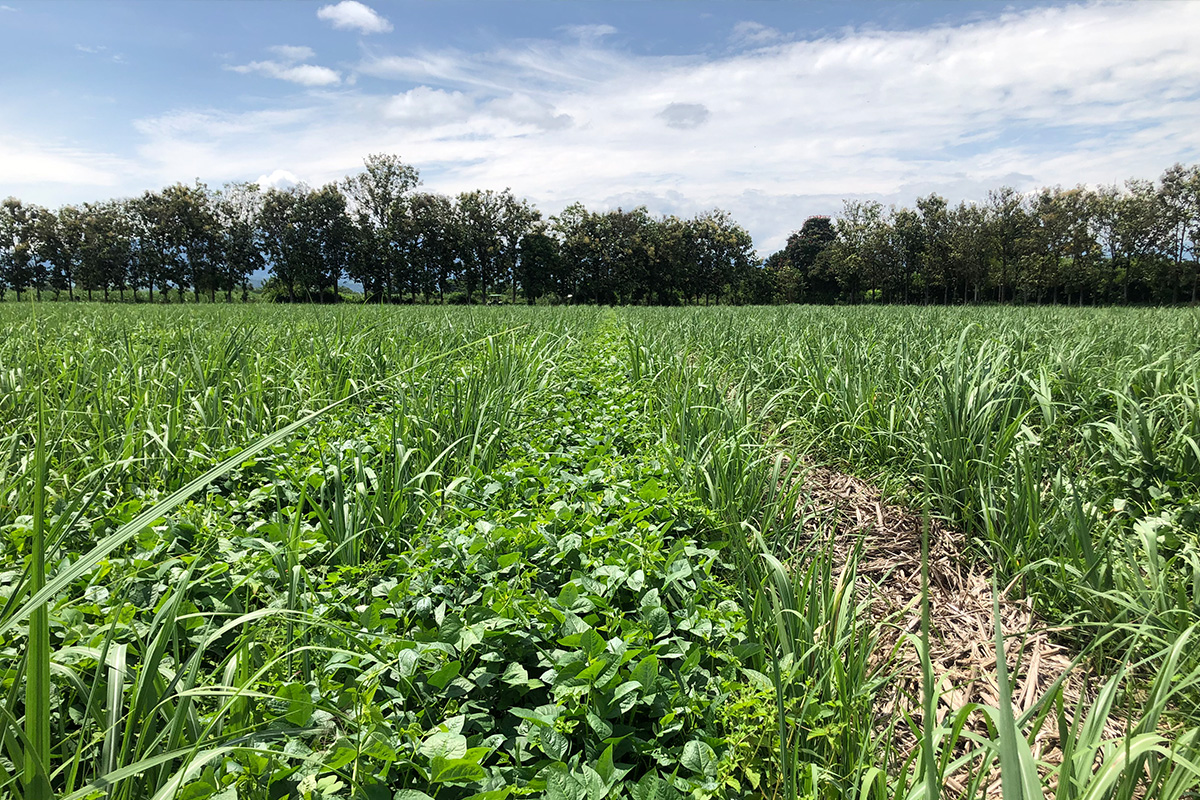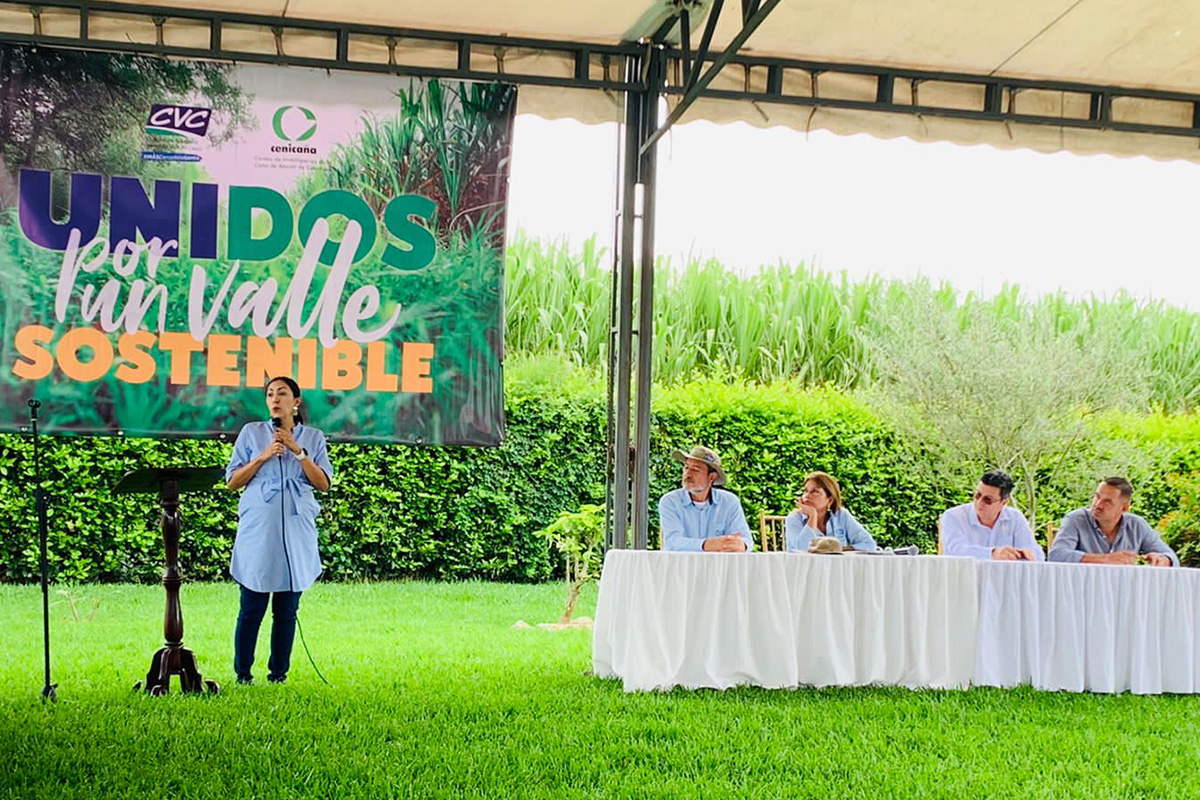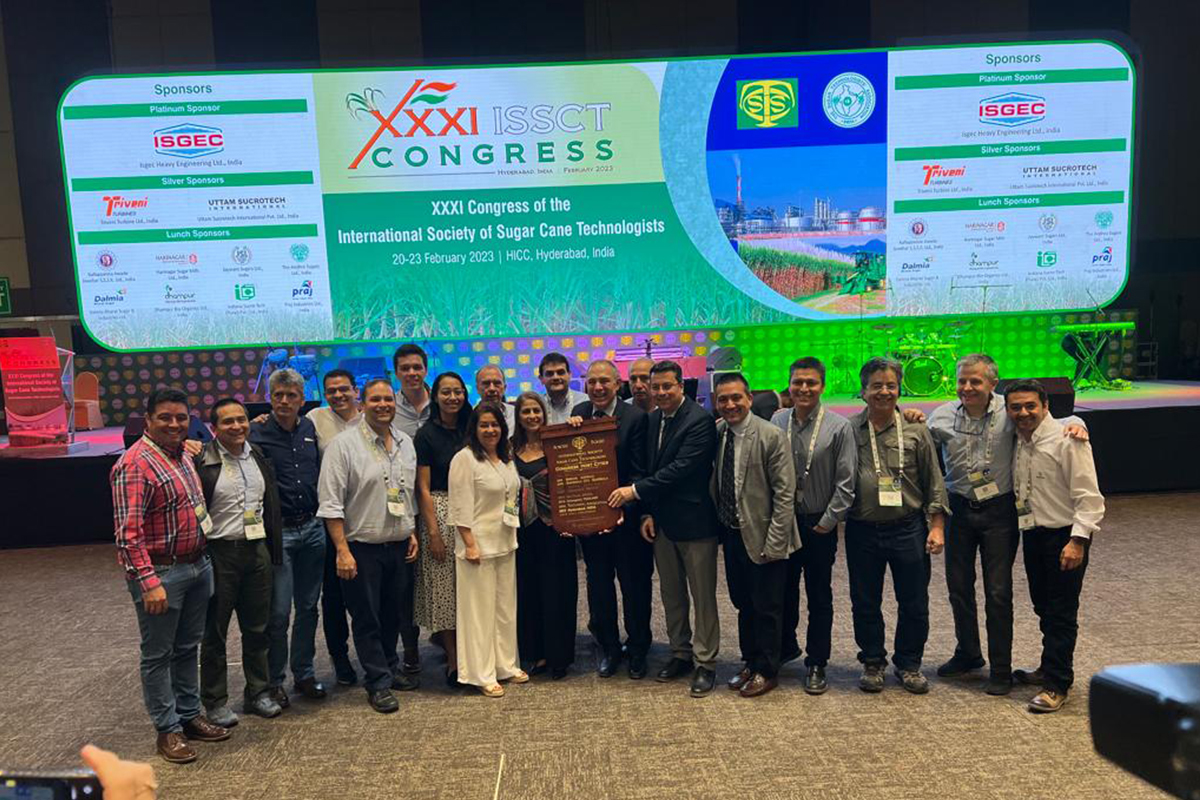Omics
Writers: Carolina Saavedra-Diaz1,2*, John Henry Trujillo-Montenegro1, Alejandra Londono1, Hugo Arley Jaimes1, John Jaime Riascos1, Fredy Antonio Salazar Villarreal1, Luis Orlando Lopez1, Carlos Arturo Viveros Valens1, Jershon Lopez1, Fernando S. Aguilar1
Sugarcane (saccharum spp.) is one of the main agro-industrial crops used for the production of sugar, ethanol and energy in the world, and is an important component in the economy of many tropical and subtropical countries. Globally, sugarcane cultivation contributes approximately 26% of biofuels and close to 80% of table sugar (ISO, 2020; Heller-Uszynska et al., 2011; OECD/FAO, 2020). Table sugar or sucrose is a disaccharide from the union of glucose and fructose and constitutes approximately 50% of the total dry matter of the mature sugarcane stem. However, the accumulation of sucrose in the stems of the plant can be affected by various factors, such as the variety planted, crop management, precipitation, light, temperature fluctuations, soil moisture and the type of soil where the crop is developed (Larrahondo & Villegas, 1995). Regarding humidity, Larrahondo & Villegas (1995), conclude that it is an important factor for the synthesis and translocation of sugars, since, when the humidity content in the plant decreases, the conversion of reducing sugars to sucrose occurs, thus impacting the production of this polysaccharide. For this reason, the accumulation of sucrose in a diverse population of sugarcane in high humidity environments was characterized.
With the aim of explaining the phenotypic variability of sucrose accumulation (% cane), within the alliance "In-silico Multiscale Optimization of Sustainable Agricultural Crops" (Omics) they are working with a diverse population made up of 220 varieties, of which of which 98 represent the genetic diversity of the CENICAÑA germplasm bank (Salazar et al., 2012), while 122 encompass a diversity in terms of wild species (Saccharum spp.., Y Erianthus spp..,), of introductions from breeding programs around the world, and of individuals tolerant/susceptible to limiting pests and diseases. These 220 varieties were planted in the humid environment of the geographic valley of the Cauca River, in the properties of the Taula Mejía farm (Ingenio La Cabaña). This farm is located within the agroecological zone 6H4, which is characterized by the presence of soils with high humidity (with excesses between 400 and 600 mm/year), with a predominance of clayey soils, with fine textures and with conditions of little aeration (Quintero et al, 2008; Carbonell et al, 2011). The sucrose accumulation (% cane) was measured for each of the 220 varieties during the first two harvests (seedling and first ratoon). This measurement was made 13 months after sowing (mods) by means of the direct-cenicaña method or DAC (Larrahondo and Torres, 1989). It is worth mentioning that, during the template, the sucrose average of the 220 varieties was 15.72%, while in the first soca this average dropped to 13.65%. These differences may be associated with environmental factors such as rainfall, which was 1216 mm during the template and 1713 mm in the first ratoon, favoring a greater accumulation of sucrose in the first cut.
When carrying out the analysis between varieties for the accumulation of sucrose, it is evident that the effect of the variety represents most of the variation observed for the sucrose variable (% Cane), presenting a variance of 2.39 (Figure 1). However, the environmental effect (ie, Plantilla or Soca) presented a variance of 1.94 (Figure 1), suggesting that sucrose accumulation (% Cane) is also affected by the environment (Figure 1). When evaluating the pattern of sucrose accumulation between harvests for 12 commercial varieties within the 220 varieties (Figure 2), it is evident that this was higher during the template, with the varieties CC 05-940 and CC 06-791, being little affected by environmental conditions. These two varieties, CC 05-940 and CC 06-791, were selected by the Cenicaña genetic improvement program, as materials adapted to the humid conditions of the Cauca river valley, and therefore registered the lowest decrease with 0.73 and 1.19. percentage units of sucrose (% Cane), respectively, when going from the template (with accumulated precipitation of 1216 mm) to the first ratoon (with accumulated precipitation of 1713 mm) (Figure 2). On the contrary, the varieties CC 01-174, CC 03-154, CC 93-4418 and CC 01-678, originally bred for dry environments in the Cauca river valley, present a great decrease in the accumulation of sucrose when passing from the template to ratoon, reducing more than 3.27 percentage units of sucrose (Figure 2). Varieties such as CC 85-92 and CC 01-1940 had a slight decrease, not greater than 1.88 percentage units of sucrose (% Cane). This pattern of behavior was recorded in another 184 varieties, suggesting that the lower rainfall during the template allowed a greater conversion of reducing sugars to sucrose (Larrahondo and Villegas 1995).
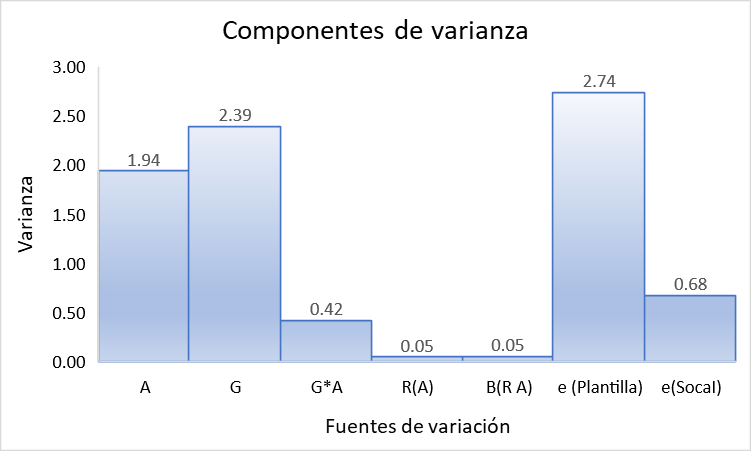
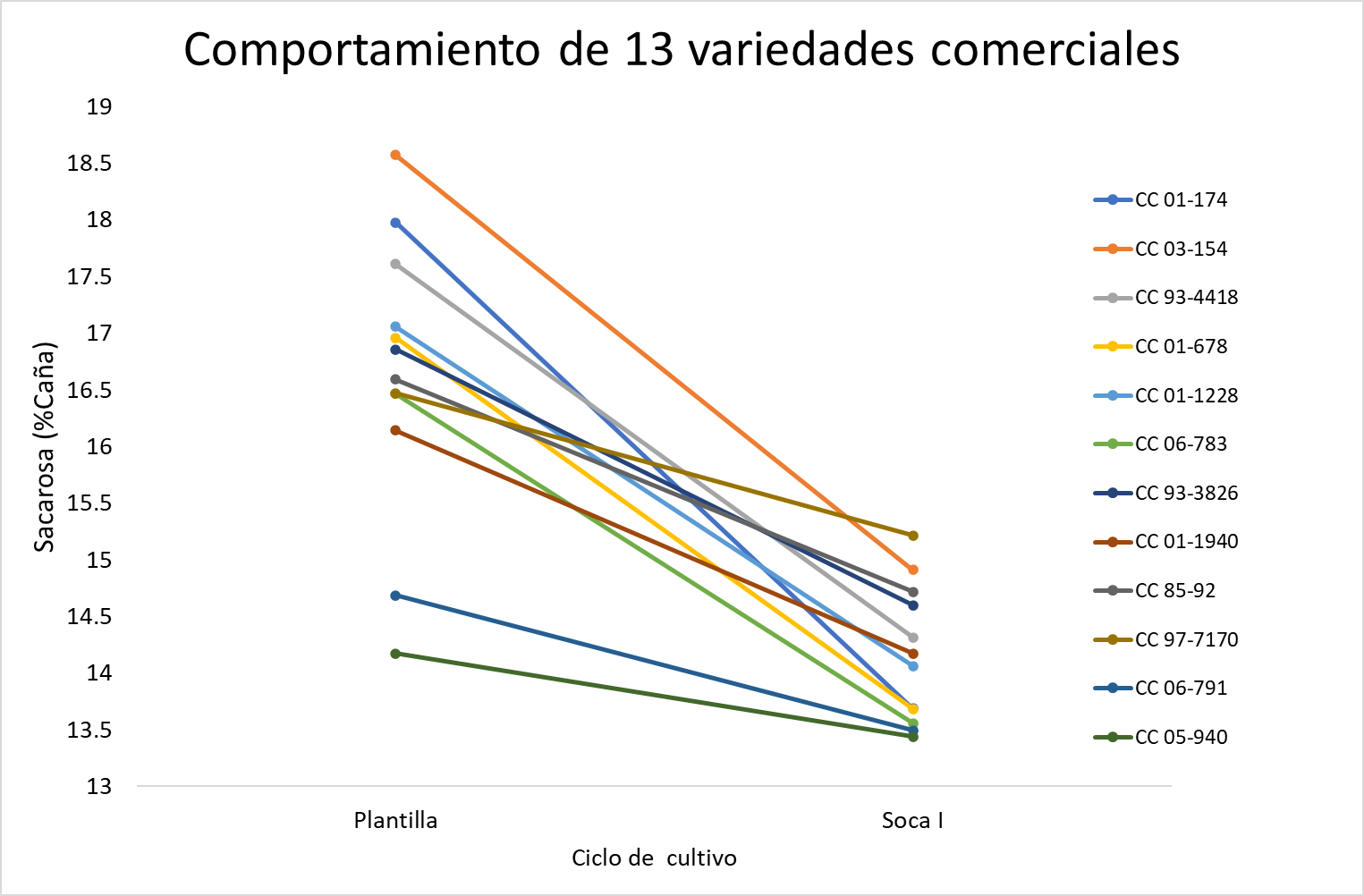
Next, a varietal grouping analysis was carried out, which consisted of classifying the varieties into groups according to their sucrose accumulation. With this analysis, two groups were obtained. The first one consisted of 205 varieties, mainly hybrids, with sucrose (% Cane) values between 11.54 % and 15.56 %, and was therefore referred to as the high sucrose group. The second group consisted of 15 varieties, including species such as S. spontaneum, S. Barberi, S. officinarum, y erianthus spp, which presented sucrose values (% Cane) between 7.47% and 11.08%, thus being the low sucrose group. It is important to mention that the high sucrose group is made up of sugarcane hybrids that have been produced through selection within the breeding process for characteristics such as high biomass and/or high sucrose, while the second group, made up mainly of species, They provide agronomic characteristics such as resistance to biotic and abiotic factors and high biomass.
In conclusion, two varietal groups were determined, one with varieties with high values of sucrose accumulation (% Cane) and another with varieties with low sucrose accumulation (% Cane). This classification makes it possible to evaluate the behavior of varieties together with other data (ie, genotypic) in genetic association studies to search for markers of agronomic interest, or in genomic selection processes. Likewise, due to the wide variability between 7,47 and 15,56% found in the accumulation of sucrose (% Cane), since this variable is mainly controlled by genetic (ie, variety to be planted) and environmental effects, It is essential to select the appropriate varietal options for the environment and agroecological zone of the farms, in order to maximize the profitability of the crop and take advantage of the unique characteristics that each variety has to offer. Thus, it is important to take into account that the best way to have a high productivity is to sow the correct variety in the correct environment and carry out the agronomic management appropriate to the agroclimatic conditions of each lot.
Bibliographic references
- Food and Agriculture Organization of the United Nations (2020) Chapter 9. Biofuels. OECD-FAO Agric OUTLOOK 2020-2029 196–208
- Heller-Uszynska K, Uszynski G, Huttner E, Evers M, Carlig J, Caig V, Aitken K, Jackson P, Piperidis G, Cox M, Gilmour R, D'Hont A, Butterfield M, Glaszmann JC & Kilian A. ( 2011). Diversity Arrays Technology effectively reveals DNA polymorphism in a large and complex genome of sugarcane. Mol Breeding 28: 37-55.
- International Sugar Organization (ISO). 2020. The Sugar Market.
- Larrahondo, JE; Villegas, F. Control and maturation characteristics. CENICAÑA. Cane cultivation in the sugar zone of Colombia, Calí, 1995, 3-10.
- Larrahondo, LE; Torres, JS (1989). Evaluation and determination of recoverable sugar from sugar cane. Cenicaña
____________________
1 Colombian Sugar Cane Research Center, Cenicaña
2 Pontifical Javeriana University, Cali
* Corresponding authors: csaavedra@cenicana.org; fsilvaag@cenicana.org










